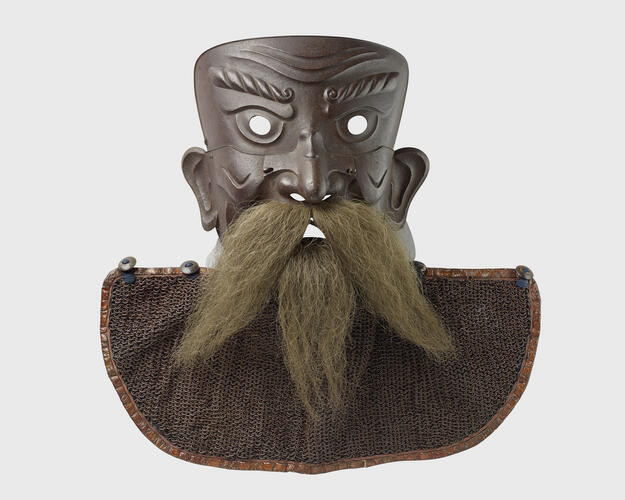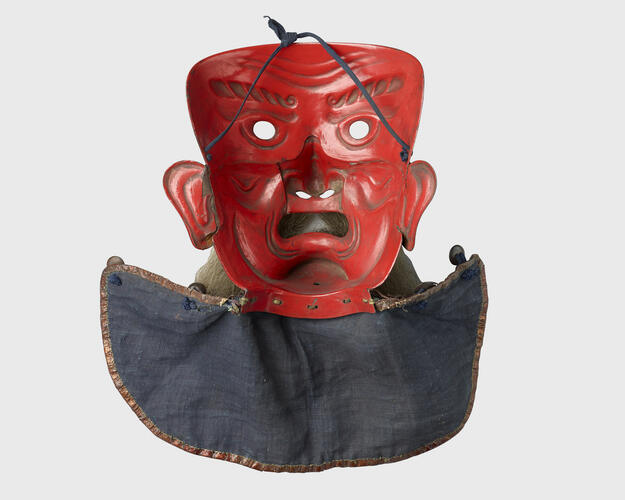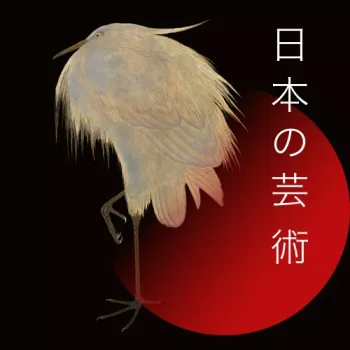Face mask (sōmen) eighteenth century
Iron, lacquer, hemp liner, gilded leather trim, horn buttons, silk cords, horsehair whiskers | 35.0 x 37.5 x 13.0 cm (whole object) | RCIN 37816

Japan
Face mask (sōmen) eighteenth century

Japan
Face mask (sōmen) eighteenth century


Japan
Face mask (sōmen) eighteenth century




-
A full-face mask (sōmen) provided both protection for the face and a means of securing the helmet to the head by tying the cords under the chin of the mask. The interior was often lacquered red, as here, to make the face appear ruddier and more fearsome. On some full-face masks, the upper face area or nosepiece can be pinched for removal, but this unsigned mask only gives the appearance of this function – the nose, despite the fixing hooks, is not removable. The addition of the iron mail throat-piece (yodare-kake) provides further protection to this vulnerable area and can be buttoned onto parts of the main armour. It would also serve to absorb or dispel sweat which drained from the underside of the chin of the mask.
Text adapted from Japan: Courts and Culture (2020)Provenance
Recorded in the Armoury Passage at Sandringham House in 1910: 'No. 623 'War-Mask (Mempo); hammered iron, blackened externally and red-lacquered on the reverse side; fitted with moustaches and beard of white horsehair, and a pendant chain-mail throat-piece known as the "saliva-apron" (yodare-kake). Japanese; probably 18th century'.
-
Creator(s)
(nationality) -
Medium and techniques
Iron, lacquer, hemp liner, gilded leather trim, horn buttons, silk cords, horsehair whiskers
Measurements
35.0 x 37.5 x 13.0 cm (whole object)
Category
Place of Production
Japan








